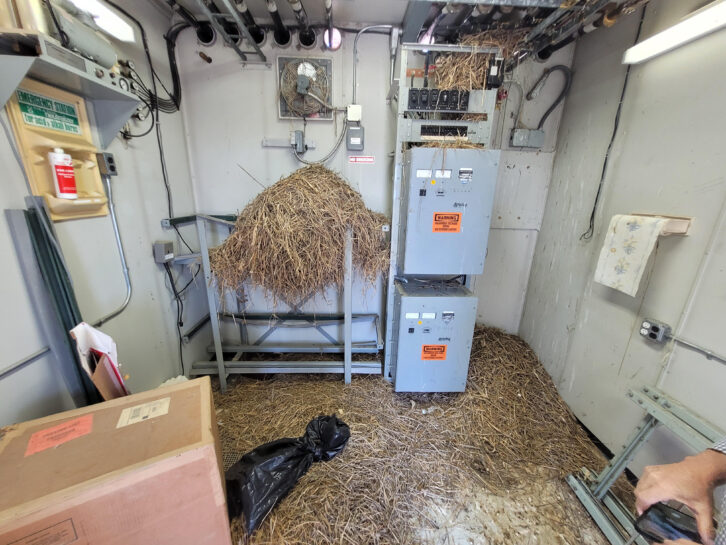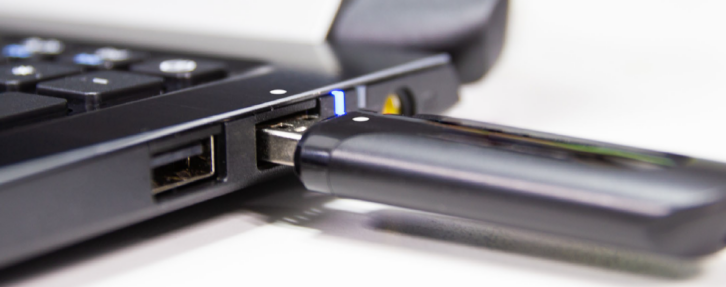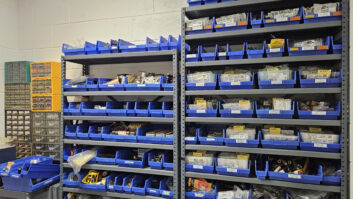Today’s broadcast equipment is so reliable and today’s concrete shelters are so solidly built that it’s easy to be lulled into a false sense of security. “The building is sealed, what could get in?” Out of sight, out of mind.
Our first photo puts the lie to such complacency. This site looks like the world’s largest bird house! How could this happen?
At the top of the picture, notice that two of the transmission line ports are missing their rubber boots, the black covers visible in the other ports.
If these seals are not held in place with large hose clamps they can come loose, leaving a 4-inch entry point.
So, one more thing to check at your transmitter site. Grab a handful of hose clamps to secure all your rubber boots and avoid this mess.
No names, no locations, just a reminder not to leave openings big enough for rodents or birds to enter.

You shall not pass
Stephen Poole, CBRE, is corporate IT specialist for Crawford Broadcasting. In the June issue of the company’s newsletter The Local Oscillator, Stephen reports that Crawford’s critical servers are now protected by Fail2Ban, a neat little program that blocks an IP address after a few failed login attempts. Find it here.
Stephen has it set to three tries; three strikes and you’re out.
When he goes into a server and runs a status check, he’s often horrified at the number of blocked attempts. In the past, many of these IP numbers came from obvious sources: China, North Korea or Russia. Lately, though, Stephen says the number of IP addresses from the United States has been on the rise.
Do you have a program, app or IT tool that makes your life as an engineer easier? Drop me a line!
Weeds aweigh, my boys
Larry Wilkins, director of engineering services for the Alabama Broadcasters Association, says that when you conduct your regular tower inspections, don’t forget the anchor points of guyed towers. They are easy to forget or ignore, perhaps because of all the walking required to reach each anchor point. But a routine inspection helps ensure that your structure is sound.
Schedule these “walk arounds” quarterly. During growing season, mow a path to each anchor point. At the anchor, inspect for vegetation growth around the anchor or up the guys; clear any you find. Look for signs of rust, broken ground wire connections and cracks in the concrete piers.
Stand at the guy anchor location and view the guy path. Is it clear of any trees that could fall on the guys? Larry says tower erectors suggest a path clear of trees 50 feet on either side of the guys and 50 feet behind the outer guy.
Good engineering practice is to enclose the anchor site within a locked fence; but make sure the fenced area is large enough to permit maintenance vehicles to pass under and clear the guy wires.
Another good tip from Larry: Take pictures of the anchor points, makes notes of the inspection and place the information in the maintenance log.
Confer and converse
If you enjoy reading Workbench you’re sure to enjoy the technical sessions that will be part of the two-day annual Alabama Broadcasters Association convention.
On Friday Aug. 11, ABA Engineering Services will host a special Engineering Day of interest to radio and TV engineers.
The seminar is offered at no charge by the association and you don’t need to work for an Alabama station to attend. The convention also will offer an exhibit hall.
Scot dots
Alex Gray is with Two Lochs Radio in Gairloc, a village on the shore of Loch Gairloc in the North West Highlands of Scotland. It’s a community station with a focus on local programming.
Alex read Marc Mann’s earlier caution that not all USB connectors are oriented in the conventional way. Terry Skelton had suggested a white paint dot; Alex takes this a step further, marking both the USB connector and the chassis-mounted jack or receptacle with white dots. This way, the staff can be asked to align the dots, and no more broken connectors!

Send your tips! Workbench submissions are encouraged and qualify for SBE recertification credit. Email [email protected].












